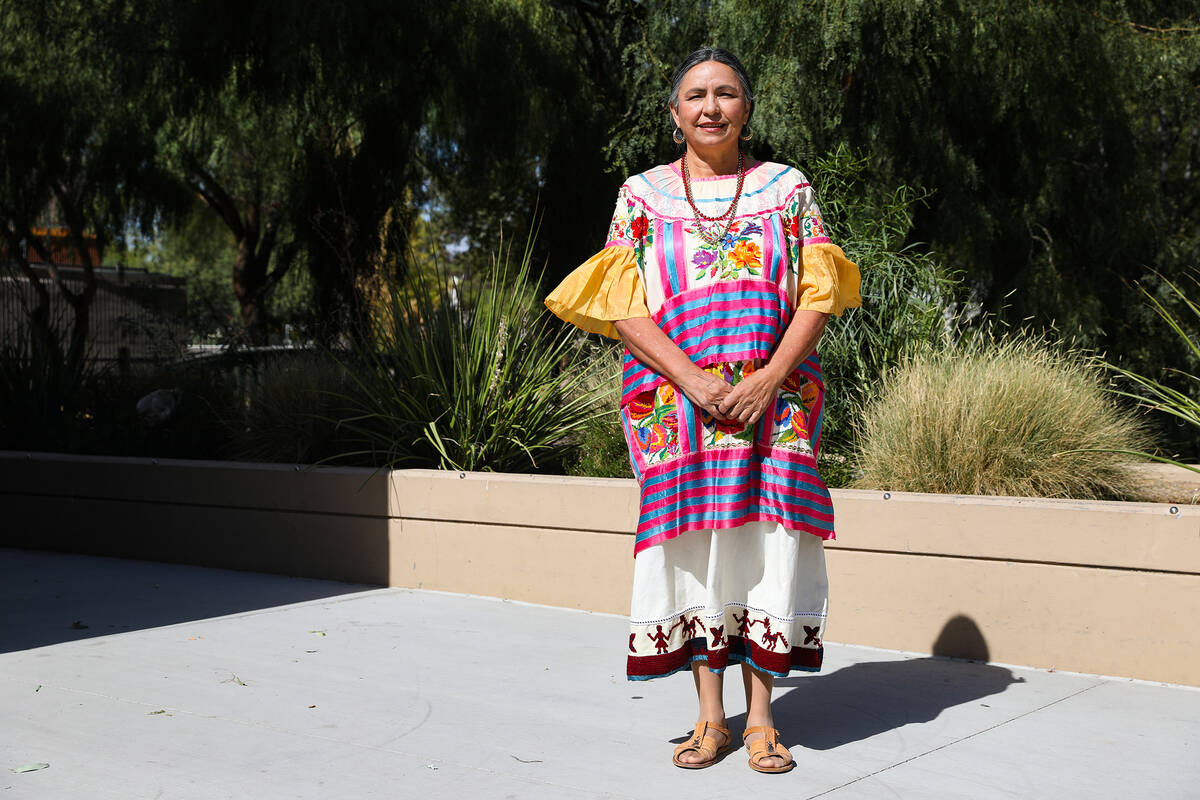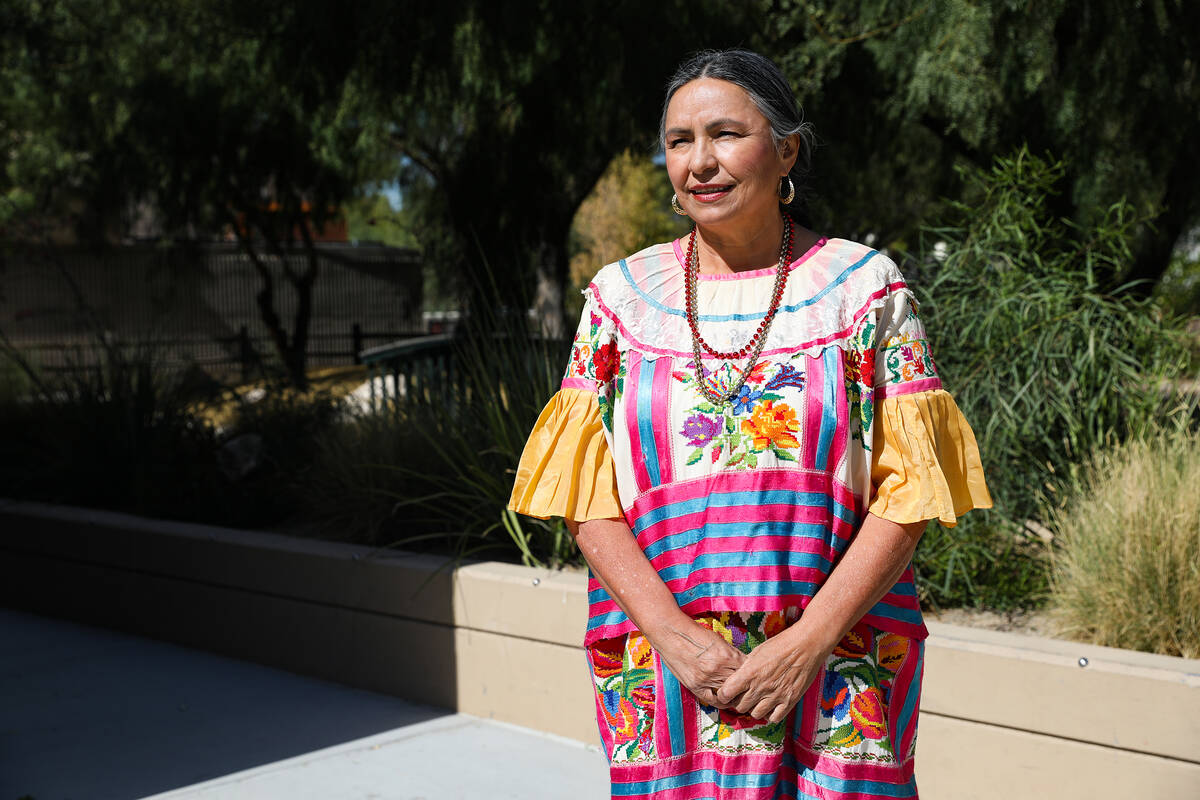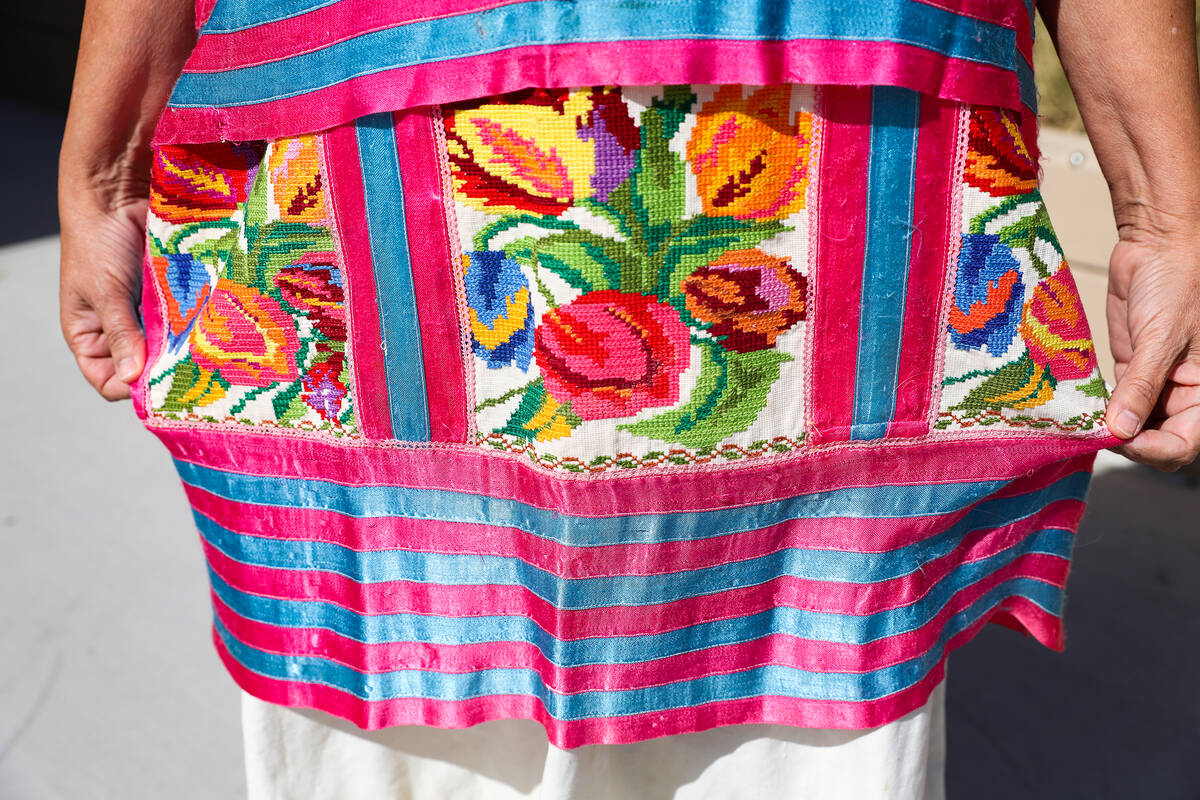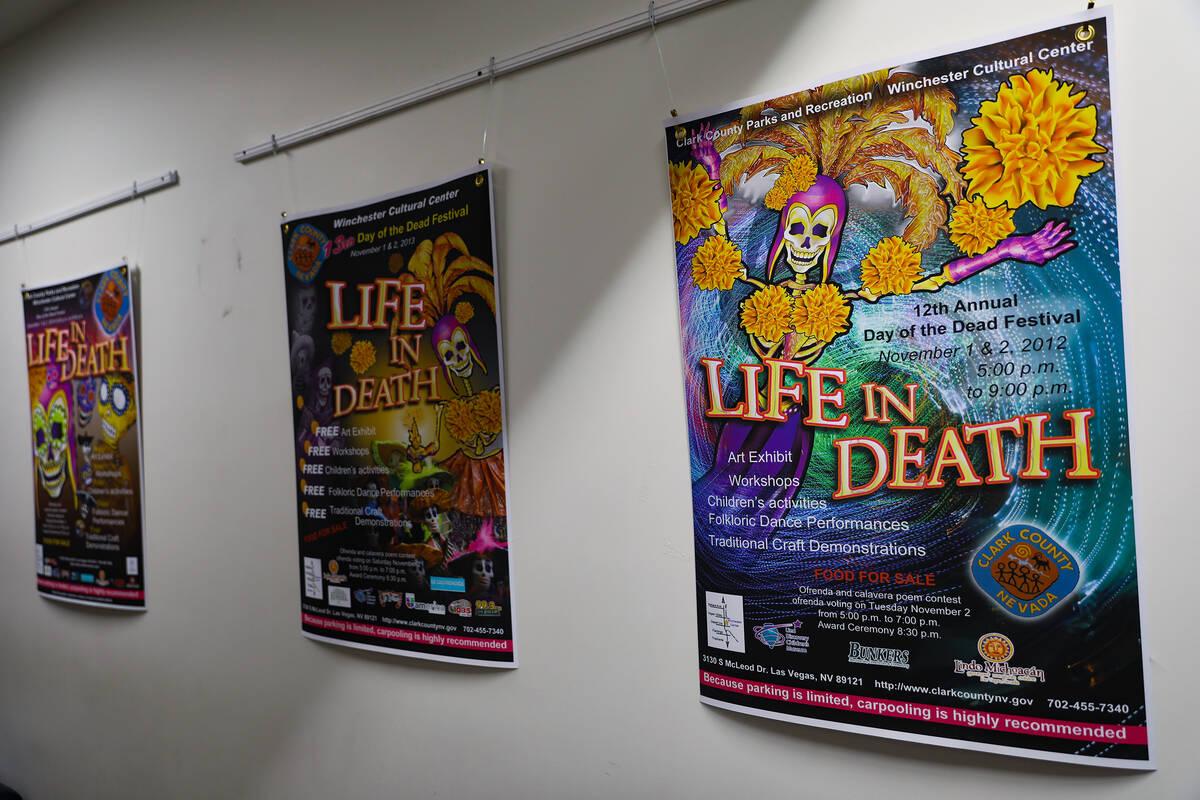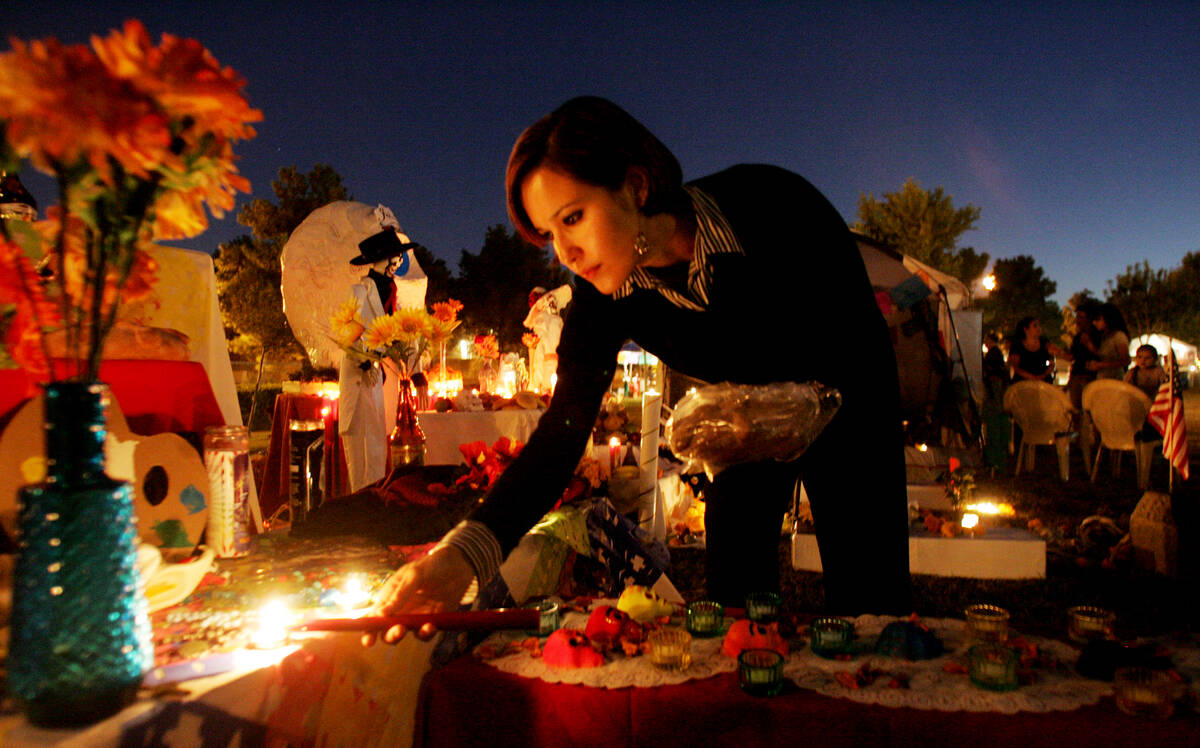Day of the Dead celebrations honor departed, remind living of mortality
It’s a celebration that involves wearing costumes, visiting cemeteries, honoring departed loved ones and thinking about death on an occasion when, some believe, the boundary that separates our world from the next weakens.
It’s not Halloween but, rather, Dia de los Muertos, or Day of the Dead, a celebration of life, death and remembrance that’s also a bit of a whistle past the graveyard as a reminder that where our deceased loved ones are now, we will be one day, too.
Day of the Dead is celebrated Nov. 1 and 2. For 20 years, Irma Varela has been organizing Day of the Dead celebrations in Southern Nevada, first at Prince of Peace Catholic Church for two years and ever since at the Winchester Dondero Cultural Center.
This year’s Life in Death Festival will be from 5 to 9 p.m. Monday and Tuesday at the center, 3130 S. McLeod Drive. The free event will include performances by Mexican dance groups, an art exhibit, plenty of skulls and skeleton iconography, readings of calaveras literarias (satirical poems honoring notable people who haven’t died yet), children’s programs and displays of ofrendas, or home altars created to honor deceased loved ones.
Traditionally, Day of the Dead is “supposedly a day that the world of the dead joins the world of the living and they can come and visit,” says Varela, cultural program supervisor at the center. “It’s like a door that opens where the dead can come in.
“For some, it’s a very holy day because it connects with your roots.”
Jorge Galindo, an associate professor of Spanish at UNLV, says Day of the Dead likely has its origins in a meshing of native Mexican culture with Catholic influences after the Spanish conquest of Mexico.
Festive celebration
“Basically, the Catholic tradition is going to the cemetery and giving respect to your relatives. That was the tradition in all Catholic countries in Europe. But in the case of Mexico and Guatemala, for example, it’s also a celebration of life, basically. According to tradition, God allows the people that passed away to go back again to this world to visit their relatives and celebrate with them,” Galindo says.
Las Vegas Auxiliary Bishop Gregory Gordon is a former pastor of St. Anne Catholic Church who saw the zeal with which Day of the Dead was celebrated among parishioners of Mexican and Latin ancestry.
According to Gordon, the Catholic church observes Nov. 1 as All Saints Day, when “we remember the saints in glory in Heaven,” and Nov. 2 as All Souls Day, when Catholics pray for those in purgatory “awaiting final purification to enter heaven.”
Day of the Dead can be “a highly festive expression of what we believe,” says Gordon, who remembers being asked by parishioners to lead All Souls Day prayers at the cemetery for deceased loved ones.
“The church has a special blessing of graves at All Souls Day. We’d go out, a deacon and myself and usually a guitarist, and we’d pray the blessing (with) all of those visiting, and it was usually in the hundreds, then maybe go grave to grave for individual blessing.”
For Gordon, Day of the Dead — if not celebrated through drunkenness or other less-than-spiritual behaviors — represents “a cultural adaptation (of) what we as Catholic Christians believe about our departed loved ones. Not everybody leaves the Earth ready to behold the presence of God.”
Palm Downtown Cemetery for several years has hosted family members observing Day of the Dead at the gravesites of loved ones. Last year’s event, as well as this year’s, was suspended because of COVID-19, but Travis Crandall, general manager of Palm Mortuary and Cemetery Downtown, expects mourners to arrive this year anyway.
“In the years we were able to hold it we had literally thousands of people come here to our pretty small cemetery,” Crandall says. “They’d start (arriving) before dark and not stop until the next day.”
Patrons would place offerings on ofrendas graveside and bring keepsakes of their loved ones, he says, and some would “lay out blankets and have a full meal.” The cemetery would put up a tent and provide nighttime lighting, and some families would hire musicians to play.
“It’s very festive,” Crandall says. “It’s very different than a traditional celebration.”
Varela attended Day of the Dead celebrations while growing up in north-central Mexico. “I remember a lot of people getting together,” she says, as well as visiting the cemetery, cleaning each loved one’s grave and bringing offerings of flowers.
“What I remember is very traditional,” Varela says — singing and going door to door to vendors and neighbors’ homes to receive gifts of fruit, with her parents encouraging children to “value your roots and your family, to honor them and remember them.”
“That was what we started to do” with the Life in Death festival here, Varela says. “For me, Day of the Dead … was to remember, to connect to (your) roots.
“I never wanted it to be too big. The festival is to connect people, connect experiences and culture.”
4K guests a day
She estimates the Life in Death festival draws about 4,000 guests each day, and she has noticed the increasing popularity of Day of the Dead-themed events around town.
“I think as long as you have conversation it’s good. That’s the goal,” Varela says. “For me, the goal is to create understanding and community.”
Still, it’s a safe bet that some attendees may not quite understand the celebration’s significance, and an even safer bet that some figure it to be, maybe, just an other-culture Halloween.
“People do get confused,” Varela says.
Thanks to movies such as the 2017 animated film “Coco” and a splashy sequence in the 2015 James Bond film “Spectre,” Day of the Dead is having its pop culture close-up, and Varela does fear that its meaning could one day be lost.
“It has become commercial. That’s the only part I don’t like,” Varela says. But, she adds, “I’d like to think the meaning is still struggling to stay relevant.”
Contact John Przybys at reviewjournal.com. or 702-383-0280. Follow @JJPrzybys on Twitter.
Preview
■ What: Life in Death Festival
■ When: 5 to 9 p.m. Monday and Tuesday
■ Where: Winchester Dondero Cultural Center, 3130 S. McLeod Drive
■ Admission: Free




